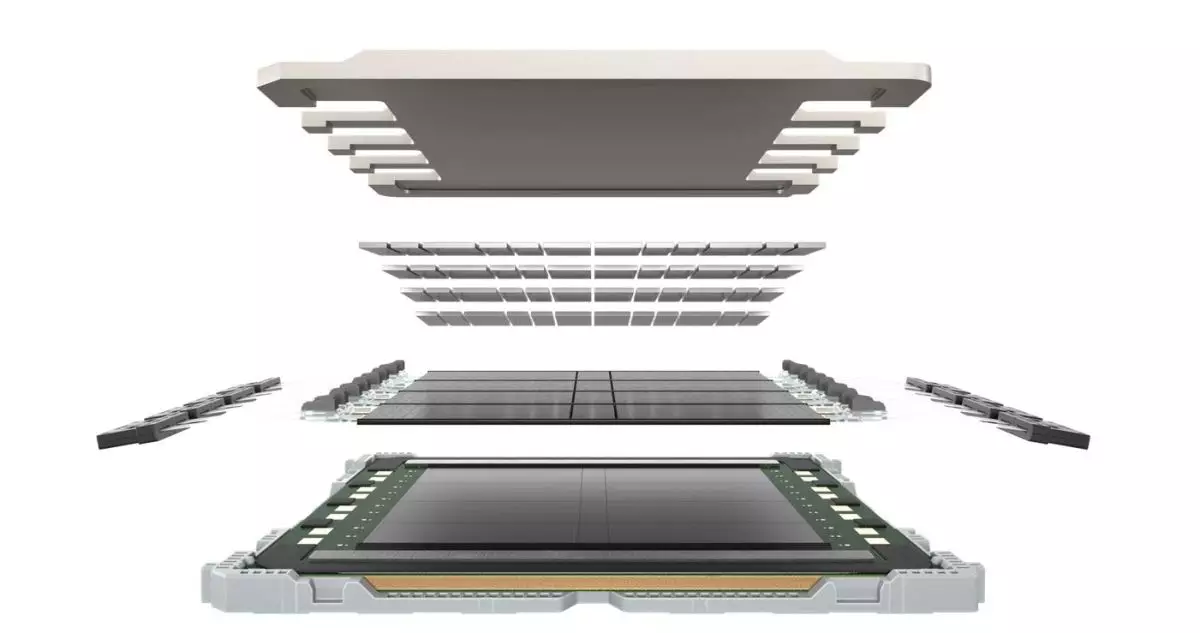Lightmatter, a pioneering startup in the realm of photonic computing, has become a noteworthy player in the tech industry with its recent $400 million funding round. This capital infusion aims at revolutionizing the way datacenters operate, particularly in the context of artificial intelligence (AI) workloads that demand staggering computational power. As enterprises increasingly rely on AI-driven solutions, the need for innovative technological frameworks to overcome traditional limitations in computing becomes evident. Lightmatter’s optical interconnect layer is poised to address this quintessential bottleneck, facilitating efficient communication between GPU units and optimizing the performance of AI models.
AI’s rapid progression has accelerated the growth of the datacenter industry, giving rise to a new wave of computing challenges. While adding more GPUs appears to be a straightforward solution, mere augmentation doesn’t account for the interconnectivity demands that arise when these nodes work collectively. Experts in high-performance computing have underscored a critical insight: the effectiveness of a supercomputer is significantly hindered if its components spend excessive time idling while awaiting data. Thus, the interconnect layer—responsible for enabling rapid communication between these nodes—plays a central role in unlocking the true potential of datacenter infrastructure.
Existing standards, such as Nvidia’s NVLink and the NVL72 platform, deliver impressive metrics, managing significant workloads in a rack. However, a glaring flaw remains—these systems tend to bottleneck when networking between racks, resulting in latency issues that undermine overall data processing power. Nick Harris, CEO of Lightmatter, articulates this concern, explaining how the transition from electrical to optical communication—and vice versa—adds a layer of latency that becomes increasingly burdensome as system complexity grows. Such challenges highlight the urgent need for a paradigm shift in computational architecture.
What sets Lightmatter apart from its competitors in this space is its use of photonic chips—technological pieces that utilize fiber optics for high-speed communication. These chips promise unparalleled data transfer capabilities, with individual fibers potentially carrying up to 1.6 terabits each. By employing multiple fibers per chip, the overall throughput surpasses traditional electrical interconnects by a substantial margin. The capability to let 1,024 GPUs operate in unison within their design optimizes performance tremendously, rendering current networking standards such as 7 terabits across 72 GPUs outdated.
Moreover, Harris asserts that the volume of optical communication in datacenters will only escalate from here. With existing setups already achieving a fascinating 30 terabits, future upgrades could see numbers soar to 100 terabits. This leap represents not merely a technical enhancement, but a fundamental rethinking of how datacenters are structured in the age of overwhelming computational needs.
The appetite for compute power among major players in the tech industry continues to expand at an unprecedented pace. Companies like Microsoft and Amazon, along with newer firms such as xAI and OpenAI, are none too shy about their insatiable demand for cutting-edge computing solutions. This trend heralds a burgeoning market for Lightmatter’s offerings—as enterprises scramble to interlink extensive infrastructures, networking capabilities provided by Lightmatter’s technology stand to carve out significant competitive advantages.
Despite keeping specific client names under wraps, Harris alludes to existing collaborations with hyperscale customers. Lightmatter’s strategy likens itself to established semiconductor foundries like TSMC—its role is less about branding for others and more about empowering firms with a robust platform for compute expansion.
Lightmatter’s recent funding raises its market valuation to an impressive $4.4 billion, trailing notable advancements in the sector nothing short of revolutionary. However, it’s essential to note that this endeavor is just beginning. Apart from innovating interconnect technology, Lightmatter also aims at creating new substrates for chips, enabling even deeper networking capabilities.
Looking ahead, Harris predicts a dramatic evolution in chip design focused on wafer-scale architectures, as the industry approaches a performance plateau. The groundwork laid by companies like Cerebras only underscores the urgency for a sustained commitment to innovation and exploration of photonics.
Lightmatter isn’t just stepping onto the stage of technological advancement; it’s poised to redefine it. The stakes are enormous, and the path ahead will require a relentless commitment to innovation. The transformation of datacenters through photonic computing could very well be a linchpin in shaping the future landscape of technology.

